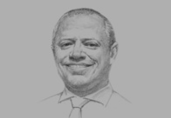Signs of recovery have lately emerged in Morocco’s industrial sector, which has been affected by a slowdown in trade in recent years – growth in value-added processing (excluding oil and refining) rose from 0.8% in 2013 to 1.8% in 2014. While subsectors like aeronautics and automotive have made big strides over the past decade, others like textiles and pharmaceuticals have lagged behind,...
Chapter | Industry & Mining from The Report: Morocco 2015
The second-largest in Africa and 53rd-largest in the world by total premiums, Morocco’s insurance market is dominated by the non-life segment, and in particular by compulsory automobile insurance. Plans to make other forms of insurance mandatory are in the works but have yet to be implemented. Market share is concentrated in the hands of a small number of mostly local firms, although foreign...
Benefitting from strong ties to both Europe and the Arab world, Morocco has the right ingredients for future growth: low inflation, political stability, an industrial base and a favourable climate. With the outlook improving for Morocco’s trade partners and the lower price of oil – of which the country is a net importer – most observers expect growth to be even stronger in 2015, with estimates ranging from 4.4% to 5.0%.
Following successful completion of the Papua New Guinea liquefied natural gas project, the country is experiencing a surge of optimism about foreign investment and overall economic growth. PNG remains favoured by its traditional investors such as Australia, but it is increasingly a target for new players, including China and Japan.
PSA Peugeot Citroën a annoncé en juin dernier son intention d'ouvrir une nouvelle usine automobile à Kénitra, insufflant ainsi un nouvel élan à l'industrie marocaine et renforçant la position du pays en tant que plaque tournante de la fabrication automobile.




